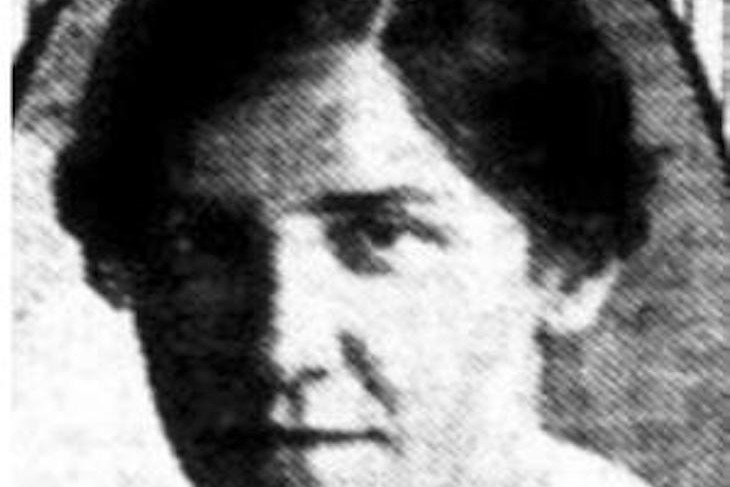General News
19 October, 2024
Veterans' Voices: Lillian Martha Malster
Lillian (Lily) Martha Malster was born in Hamilton in 1890, the eldest daughter of Frederick and Martha (Croft) Malster of 'Anchorage', North Hamilton.

Lily attended Hamilton State School.
She passed her nursing exams at a private hospital in Colac in 1913.
Lily nursed at another private hospital in Adeliade and did further training at the Austin Hospital, Heidelberg, Melbourne.
Lily enlisted when she was 25 years of age, on April 30 1915.
Lily left Australia with 3rd Australian General Hospital from Sydney onboard RMS Mooltan on either May 15 or 20 1915, expecting to go to France.
However, she was sent to serve on Lemnos Island, Greece, south-west of the Gallipoli Peninsula, to nurse sick and injured soldiers evacuated from this campaign.
There were 130 nurses at 3rd Australian General Hospital, one of many units and hospital ships in the Aegean Sea which were used until medical supplies arrived weeks later at hospitals.
The weather was intensely hot.
Dysentery or paratyphoid affected the hospital.
In late November-December 1915 patients were exhibiting the effects of the very cold and wet weather on men who had inadequate uniforms.
The conditions included severe frostbite.
The hospital was expanded to 1000 beds as part of the preparation for the expected heavy casualties when the troops were to withdraw from Gallipoli.
Sister Malster’s experiences
Sister L. Malster, daughter of Mr F Malster, Hamilton, in a letter dated Lemnos Island, 3rd Australian General Hospital, Base Depot, Egypt, August 23, wrote:
Here I am at work, now, and, by jove, it is work too.
Nurses’ equipment did not arrive for days, but the hospital was ready.
Next morning, we went "on duty" to a tent with 20 mattresses, blankets, four stools, a couple of tea pots and a jug, all the equipment of my tent.
We soon filled up.
Men were thankful to get on a mattress.
They were all hungry but nothing, except six mugs or feeders to 40 patients to serve food on.
They drank from plates.
Little or no cutlery meant fingers were used.
We had two small bowls to wash us all and triangle bandages in place of towels.
Many men hadn’t seen soap or soft water for long time, washing on the beach and learning to swim.
Water was limited: two cups of water for each patient and staff.
Orderlies carried water nearly a mile.
We now have a condenser working and the water is laid on not far from my tent, with theatre, surgical stores and the quartermaster's stores tents around me.
Today we actually got our beds and men are between sheets and in pyjamas, the majority of the men needing a bath.
A few nurses have cut their hair off on account of the heat.
That’s no worse than at home.
I have one large tent and four bell tents.
There are winds: gales that blow a hurricane at night.
The food has been awful: dog biscuits as hard as a piece of iron, no potatoes and sour bread.
This letter from Lily was published on page 4 of the Hamilton Spectator on Wednesday November 3 1915.
With the Gallipoli campaign over, nurses including Lily boarded SS Oxfordshire on January 14 1916 and sailed on January 17, arriving in Alexandria, Egypt.
The 3 AGH was re-established at Abbassia in Egypt in February 1916.
On October 5 1916 Lilian left Egypt, arriving in England with 3rd General Hospital.
There they operated the Kitchener War Hospital at Brighton, England, from October 1916 to 11 April 1917.
They moved to Abbeville in the Somme area of France in May 1917 with 91 nursing staff.
The 3rd General Hospital then operated from tents and huts they could walk into and move about in without needing to duck their heads.
Lily wrote of mud, heat and dust.
The 3rd General Hospital, for most of its existence on the Western Front from May 1917 to May 1918, admitted gassed patients.
During the German 1918 offensive, 3 AGH operated as a casualty clearing station.
Lily was detached to the 2nd Stationary Hospital in a German prisoners’ ward.
Lily’s feelings towards the Germans were that they like our own: badly wounded and one felt sorry for them.
However, she also said they were eating our food and she was conscious of their treatment of "our dear boys".
Lily moved to the 1st Australian Casualty Clearing Station at Outtersteene near Hazebrouck, arriving on August 23 1917.
She returned to the 3rd AGH on December 8 1917 before taking leave over Christmas, returning on January 7 1918.
Lily contracted German measles (rubella).
After recovering, she rejoined her unit on March 16 1918.
The 3 AGH closed for admissions on Aprril 16 1919.
Nursing staff including Lily returned to England in parties of 10, with the last leaving France on May 23 1919.
Eight months later, on board Megantic, Lily finally arrived in Australia between February 18 and 20 1920, disembarking in Adelaide.
Sister Lily’s appointment to the Australian Army Nursing Service was terminated on June 27 1920.
Lily moved to Hawthorn and later lived in Canterbury.
She continued nursing, joining Mont Park Psychiatric Hospital.
In 1935 Lily became honorary secretary of the city branch of the Mental Hospitals Auxiliary.
Lily did not marry, living with her sister Daisy.
Liliian died on November 8 1972.
She is commemorated at the Springvale Botanical Cemetery, Melbourne.
Lily was cremated and her ashes scattered.
Lily is remembered on the Colac Presbyterian Church honour roll, the Hamilton Christ Church World War I roll of honour and the Hamilton Primary School roll of honour and in Keswick, South Australia.
With thanks: Sally Bertram, RSL Military History Library. Contact Sally at sj.bertram@hotmail.com or call 0409 351 940.